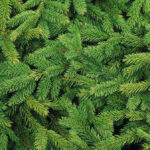The Inessive Case (Missä) – Finnish Grammar
The inessive case (inessiivi) ends in -ssa/-ssä and answers to the question “missä” aka “where“. If you’re looking for an overview about missä, mistä and mihin, look here.
- The Use of the Inessive Case
- When something is IN something
- When two things are closely connected
- When objects have something
- When using the verb käydä
- With certain expressions of time
- With the third infinitive
- In certain expressions
- With the second infinitive
- The Formation of the Inessive Case
- Words ending in a vowel (a, ä, o, ö, u, y)
- Words ending in an -e
- Words ending in -i
- New words ending in -i
- Old words ending in -i
- Old words ending in -si
- Words ending in a consonant
- Words ending in -nen
- Words ending in -as
- Words ending in -is
- Words ending in -os/-ös
- Words ending in -us/-ys
- Words ending in -ton
- Words ending in -in
- Words ending in –ut
- Words ending in -tar
- Non-Finnish words ending in a consonant
- Consonant Gradation in the Inessive Case
1. Use of the Inessive Case (Missä)
1.1. When saying something is IN something
When something is in something, inside something physically, you will use the -ssa case.
| Finnish | English |
|---|---|
| Leipä on kaapissa. | The bread is in the cupboard. |
| Me asumme Suomessa. | We live in Finland. |
| Kirjastossa on tänään paljon ihmisiä. | There are many people in the library today. |
1.2. When two things are closely connected
When two things are very close to each other, or connected in a way where one doesn’t easily come loose from the other, we can also use -ssa. This is different from in English. Learn more about how to express wearing clothes using the inessive here!
| Finnish | English |
|---|---|
| Katja Lehtinen puhelimessa. | Katja Lehtinen on (“in”) the telephone. |
| Istumme pöydässä. | We sit at (“in”) the table. |
| Sormus on sormessa. | The ring is on (“in”) the finger. |
| Kenkä on jalassa. | The shoe is on (“in”) the foot. |
| Käsineet ovat käsissä. | The gloves are on (“in”) the hands. |
1.3. When objects have something
When people have something, you use the minulla on -sentence construction. When a THING has something, you generally use the inessive (-ssa). This is not a fool-proof rule, but you’re bound to run into this.
| Affirmative | Translation 1 | Translation 2 |
|---|---|---|
| Asunnossa on ikkuna. | In the apartment there is a window. | The apartment has a window. |
| Kirjassa on yli 300 sivua. | In the book there are over 300 pages. | The book has over 300 pages. |
| Autossa on neljä rengasta. | The car has four wheels. | |
| Pöydässä on neljä jalkaa. | The table has four legs. |
1.4. When using the verb “käydä“
The verb “käydä” means “to visit”, but the meaning of it is a lot wider than in English. In Finnish, you visit the toilet, the store and the shower. The idea of “käydä” is that you go somewhere, stay there for a short period of time, and then return to where you came from. In that light, you can see very well why you would “visit” the toilet. If you say you “go” to the toilet, you’re kind of focusing on the trip there rather than on the fact that you’ll be back after a little bit. You can find more examples of this in our article with example sentences. You can also learn more about käydä in general.
| Finnish | English |
|---|---|
| Minä käyn kaupassa. | I visit the store. |
| Me kävimme Suomessa. | We visited Finland. |
| Minä käyn suihkussa. | I go have a shower. |
| Sanna kävi vessassa. | Sanna went to the toilet. |
1.5. With certain expressions of time
Some expressions of time use the missä-form. With expressions of time, I would recommend against comparing with English because you will find out the Finnish system is a lot more difficult. Find out more in our article about expressions of time.
| Finnish | English |
|---|---|
| joulukuussa | in December |
| kerran vuodessa |
once a year |
| kolme kertaa päivässä |
three times a day |
| viidessä minuutissa | in five minutes |
| kerran kuussa | once a month |
1.6. With the third infinitive
The inessive can also be used in combination with the third infinitive. In this case, the -ssa ending gets added to a verb rather than a noun! It expresses that something is/was taking place at the time we’re talking about.
| Finnish | English |
|---|---|
| Olen lukemassa. | I’m reading. |
| Olin lukemassa. | I was reading. |
| Olitteko nukkumassa? | Were you sleeping? |
| Istuin pitkään lukemassa. | I sat and read for a long time. |
1.7. In certain expressions
In certain expressions with the verb olla you will also find the missä-form. Many of these phrases are extremely common and definitely worth looking into! I currently have two articles on such phrases:
| Finnish | English |
|---|---|
| Ovi on jumissa. | The door is stuck. |
| Anne on oikeassa. | Anne is right. |
| Käteni ovat jäässä. | My hands are frozen. |
| Vessa on tukossa. | The toilet is stuck. |
| Mies on väsyksissä. | The man is tired. |
| Käsi on turvoksissa. | The hand is swollen. |
| Työ on seisauksissa. | Work is at a standstill. |
1.8. With the second infinitive
In the temporal participle construction, you will use the second infinitive in combination with the inessive to express that two things are happening at the same time (e.g. “Hämärässä lukiessa silmät alkavat särkeä” = “When reading in the dark your eyes start hurting”).
| Finnish | English |
|---|---|
| Tuon lahjat tullessani. | I bring the presents when I’m coming. |
| Laulan siivotessani. | I sing while cleaning. |
| Siivottaessa kannattaa laulaa. | One should sing while cleaning. |
| Imuroidessani hyräilen. | I hum while vacuum cleaning. |
2. The Formation of the Inessive Case
The inessive is one of the six location cases. Its ending -ssa/ssä (see: vowel harmony) gets added to the same form as most of the other locations cases (-sta, -lla, -lta, -lle).
2.1. Words ending in a vowel (-a/-ä, -u/-y, -o/-ö): add -ssa/-ssä
This is also true for some words ending in -i, but they generally have a different rule. See below!
| Nominative | Inessive | Nominative | Inessive |
|---|---|---|---|
| kala | kalassa | tyyny | tyynyssä |
| talo | talossa | seinä | seinässä |
| työ | työssä | melu | melussa |
| radio | radiossa | puu | puussa |
2.2. Words ending in -e: add an extra -e- before the -ssa/-ssä
Words ending in -e get a second -e- in any case except the partitive. Words ending in -e belong to wordtype B, which means their basic form will be weak (e.g. parveke, koe) and their inessive strong (e.g. parvekkeessa, kokeessa).
| Nominative | Inessive | Nominative | Inessive |
|---|---|---|---|
| huone | huoneessa | perhe | perheessä |
| kappale | kappaleessa | kirje | kirjeessä |
| lentokone | lentokoneessa | taide | taiteessa |
| parveke | parvekkeessa | koe | kokeessa |
2.3. Words ending in -i
You can read more about the difference between the different kinds of words ending in -i here.
2.3.1. New words ending in -i: add -ssa/-ssä
New words are often loanwords. Usually they’re recognisable because they resemble words in other languages, like pankki for “bank”, or paperi for “paper”. Loanwords are easier than Finnish words because they don’t undergo as many changes when you add endings.
| Nominative | Inessive | Nominative | Inessive |
|---|---|---|---|
| banaani | banaanissa | paperi | paperissa |
| kahvi | kahvissa | pankki | pankissa |
| posti | postissa | maali | maalissa |
| tili | tilissä | adverbi | adverbissa |
2.3.2. Old words ending in -i: replace -i- with -e- and add -ssa/-ssä
Old words are very often nature words. After all, nature has been around for so long that Finns have had names for nature words since the very beginning. Some words’ age can be confusing, for example äiti (mother) is actually a fairly new Finnish word, even though mothers have been around since the beginning of time!
| Nominative | Inessive | Nominative | Inessive |
|---|---|---|---|
| ovi | ovessa | suuri | suuressa |
| suomi | suomessa | pieni | pienessä |
| pilvi | pilvessä | veri | veressä |
| lehti | lehdessä | huuli | huulessa |
| joki | joessa | lohi | lohessa |
This section combines words belonging to the OVI-type and the PIENI-type into one because these types undergo the exact same change when inflected in the inessive case.
2.3.3. Old words ending in -si: replace -si with -de- and add -ssa/-ssä
More old words, but this time with -si at their end. This group has its own additional change: the -si will turn into -de-.
| Nominative | Inessive | Nominative | Inessive |
|---|---|---|---|
| uusi | uudessa | vuosi | vuodessa |
| käsi | kädessä | kuukausi | kuukaudessa |
| vesi | vedessä | reisi | reidessä |
I have a more extensive list of words that belong to this type here.
2.4. Words ending in a consonant
2.4.1. Words ending in -nen: replace the -nen with -se before the -ssa/-ssä
This is the same change that -nen words go through when used in any case except the partitive.
| Nominative | Inessive | Nominative | Inessive |
|---|---|---|---|
| nainen | naisessa | hevonen | hevosessa |
| suomalainen | suomalaisessa | eteinen | eteisessä |
| iloinen | iloisessa | ihminen | ihmisessä |
| sininen | sinisessä | toinen | toisessa |
2.4.2. Words ending in -as: replace -as with -aa- + -ssa
Words ending in -as (or –äs, depending on vowel harmony rules) belong to wordtype B, so they will have the weak grade in their basic form (e.g. rakas, opas) and the strong grade in the inessive (e.g. rakkaassa, oppaassa). Read more about words ending in -as here.
| Nominative | Inessive | Nominative | Inessive |
|---|---|---|---|
| rakas | rakkaassa | rikas | rikkaassa |
| taivas | taivaassa | lipas | lippaassa |
| opas | oppaassa | itsekäs | itsekkäässä |
2.4.3. Words ending in -is: two groups
For words ending in -is, we have two groups: words like kallis that get -ii- when inflected, and words like roskis that get -ikse- when inflected.
| Nominative | Inessive | Nominative | Inessive |
|---|---|---|---|
| kallis | kalliissa | roskis | roskiksessa |
| kaunis | kauniissa | kirppis | kirppiksessä |
| kauris | kauriissa | fiilis | fiiliksessä |
| ruis | rukiissa | futis | futiksessa |
2.4.4. Words ending in -os/-ös: replace –os with –okse– and add –ssa
Words ending in -os and –ös will respectively get -okse- and –ökse– when inflected.
| Nominative | Inessive | Nominative | Inessive |
|---|---|---|---|
| ostos | ostoksessa | jäljennös | jäljennöksessä |
| piirros | piirroksessa | käännös | käännöksessä |
| annos | annoksessa | luonnos | luonnoksessa |
2.4.5. Words ending in -us/-ys: two groups
Words ending in –us can belong to two groups: some get -ukse-, others get -ude- before the inessive’s -ssa. This depends on whether the word is derived from an adjective (e.g. pimeä > pimeys) or not. Words which have been derived from an adjective get –ude-, while other words get –ukse-. You will want to check out this article to get the specifics.
| Nominative | Inessive | Nominative | Inessive |
|---|---|---|---|
| mahdollisuus | mahdollisuudessa | vastaus | vastauksessa |
| rakkaus | rakkaudessa | kysymys | kysymyksessä |
| ystävyys | ystävyydessä | keskus | keskuksessa |
| pimeys | pimeydessä | tarjous | tarjouksessa |
Some general guidelines:
- If the word is based on a verb (such as opettaa > opetus), it will generally get –ukse-.
- If the word is based on an adjective (such as pimeä > pimeys), it will get –ude-.
- If the word is based on a noun (such as ystävä > ystävyys), it will get –ude-.
- If the word ends in –uus/yys (double vowel), you will get –ude-.
2.4.6. Words ending in -ton: replace -ton with -ttoma- + -ssa
Read more about words ending in -ton here.
| Nominative | Inessive | Nominative | Inessive |
|---|---|---|---|
| työtön | työttömässä | koditon | kodittomassa |
| rahaton | rahattomassa | rasvaton | rasvattomassa |
| maidoton | maidottomassa | alkoholiton | alkoholittomassa |
2.4.7. Words ending in -in: replace -in with -ime- + -ssa
Read more about words ending in -in here.
| Nominative | Inessive | Nominative | Inessive |
|---|---|---|---|
| puhelin | puhelimessa | keitin | keittimessä |
| avain | avaimessa | kiharrin | kihartimessa |
| puhallin | puhaltimessa | suoritin | suorittimessa |
2.4.8. Words ending in -ut: two groups
Words that end in -ut/yt can belong to two wordtypes. The smallest group of the two contains words such as olut, kevyt and lyhyt. For these words, you will replace the final -t with an –e- before the inessive’s case ending.
The much larger group is made up of NUT-participles such as väsynyt and tottunut. For the words, you will replace the -ut/yt with -ee- before the inessive’s case ending.
| Nominative | Inessive | Nominative | Inessive |
|---|---|---|---|
| kevyt | kevyessä | väsynyt | väsyneessä |
| olut | oluessa | ollut | olleessa |
| ohut | ohuessa | mennyt | menneessä |
2.4.9. Words ending in -tar
Words endin in -tar are rare, but at least tytär (daughter) is a common word. In the missä-form, these words get -ttare- in place of the basic form’s -tar.
| Nominative | Inessive | Nominative | Inessive |
|---|---|---|---|
| tytär | tyttäressä | kuningatar | kuningattaressa |
| herttuatar | herttuattaressa | jumalatar | jumalattaressa |
2.4.10. Non-Finnish words ending in a consonant
Loanwords and foreign names (e.g. Jonathan, Facebook) which end in a consonant will have an extra -i- added before the inessive’s -ssa.
| Nominative | Inessive | Nominative | Inessive |
|---|---|---|---|
| Jonathan | Jonathanissa | Facebookissa | |
| William | Williamissa | Windows | Windowsissa |
| Marian | Marianissa | Steam | Steamissa |
| Mohamed | Mohamedissa | McDonalds | McDonaldsissa |
You might also want to check out these two articles:
3. Consonant Gradation in the Inessive Case
| Wordtype A | |||
|---|---|---|---|
| Nominative | Inessive | Nominative | Inessive |
| tyttö | tytössä | pankki | pankissa |
| puku | puvussa | pöytä | pöydässä |
| hattu | hatussa | kauppa | kaupassa |
| silta | sillassa | kampa | kammassa |
| hiekka | hiekassa | apu | avussa |
I have a separate article on wordtype A.
| Wordtype B | |||
|---|---|---|---|
| Nominative | Inessive | Nominative | Inessive |
| savuke | savukkeessa | opas | oppaassa |
| keitin | keittimessä | tavoite | tavoitteessa |
| rakas | rakkaassa | hammas | hampaassa |
| soitin | soittimessa | puhallin | puhaltimessa |
| allas | altaassa | työtön | työttömässä |
I have a separate article on wordtype B.





Thank you for the very complete and informative presentation on use of the inessive. At the risk of gilding the lily, allow me to share another item from my notes.
Similar to sections 1.1 and 1.2 above, an inessive expression can be used to indicate “covering” such as Koivut ovat lehdessä (The birches have leaves [have grown leaves]), or other states (e.g. Ovi on lukossa (The door is locked; literally: Door is in lock). These follow a tripartite structure together with the illative (e.g. Koivut puhkeavat lehteen (The leaves of birches are coming out, literally: Birches burst into leaf)) and elative (e.g., Avasin oven lukosta (I unlocked the door)), as discussed here. This inner entering/being(static)/leaving paradigm also applies to the many adverbs listed in on the Missä Phrases – Menossa Tukossa Pystyssä Jäässä page.
I’d like to see some information about how you form this case (or any other, for that matter) for non-Finnish city names with more than one word. How do you form the inessive of “New York, NY” or “San Diego, CA”, for example?
That’s a good question, yes! It’s luckily fairly easy, because you just add the case ending to the last part of the city. I wouldn’t mention the state each time you talk about it (Finns are not very likely to be able to place the location of a state), but I included those in the examples below:
How is it with vowel harmony for foreign words that contain both front and back vowels? For instance, Göteborg, is it Göteborgissa or Göteborgissä? The former gives much more results in Google so I guess it’s correct, but why? Maybe the last vowel is relevant? Just like in Finnish compound words, where the last part decides about the vowel harmony (for instance pääkaupungissa). Also Malmössä has more results than Malmössa and Ystadissa more than Ystadissä.
Another great question! As you thought, the end of the word is indeed important, just like in compound words. The general rule is that the ending matches us with the pronunciation of the name, not its written form. Göteborg ends in an -o- sound, so we’ll use -ssa. Similarly, Malmö SHOULD be Malmössä because it ends in an -öö- sound. Other examples:
Your google search results aptly show that there is variation here in what form is used in practice. If someone is writing, they might pay more attention to the way the word is written than how it’s pronounced. This causes confusion with some very common English names, such as Sarah. You might SAY Särällä, but the written form mainly used is Sarahilla. Casey is another interesting name: the pronunciation is [keisii], so it would be pronounced [keisiillä]. However, in written sources, you’re likely to find both Caseyllä and Caseylla.
I very much doubt any Finn listening or reading your texts will care very much about the vowel harmony of foreign words. My general advice would be to rely on Wikipedia for this rather than google. Read through the Wikipedia article and scan it for inflected forms (eg. Pärnussa, Pärnusta, Pärnua).
I would say for 1.3 that living things get -llA and non-living things get -ssA. Based on the tests I have done with the DeepL translator.
Hmm, there are plenty of things that get -llA rather than -ssA in many different contexts.
Perhaps you were focussing on sentences where someone/something HAS something? That’s the first context that came to mind when trying to see in what cases your statement is true: Tytöllä on sisko vs. Autossa on uudet renkaat.
For example, we say koiralla on korvat and not koirassa on korvat
not sure if this question fits here, so apologies if it doesnt, but ive been seeing the construction “että siinä” + mennä (like “luulin, että siinä menisi enemmän aikaa”) a lot and ive just been wondering why “se” is inflected in the inessive instead of the illative for mennä? at least wiktionary points towards the illative (using “siihen”), not sure if thats correct either
Sorry for the late reply! This question sparked some conversation on Discord (I passed it along because I wasn’t sure myself). Turns out Finns are not sure what the difference is between the two, but both are possible.
Viltsu explained that they’re often interchangeable but “siihen” emphasizes that a certain amount of time was put into something, whilst “siinä” means that something took a certain amount of time.
Another reply focused on “syömiseen meni tunti” and “syömisessä meni tunti”, and theorized that when using “siihen” you’re focused on the task, the eating is the important thing, we’re focusing on the time it took. When using “siinä”, we’re not so focused on completing the eating, the eating itself could have been done quicker, we were maybe doing other things at the same time, or only eating a bit now and then and discussing things in between. Our lunch break took an hour, but not necessarily an hour of actively eating.
I hope this helps somewhat. It seems a suble, nuanced thing.
What do you call this case for herätä? How is it formed. For example: Herätessä potilasta huimaa.
nukkumaan mennessä
Thta’s the second infinitive’s -ssa form! https://uusikielemme.fi/finnish-grammar/verbs/infinitives/the-second-infinitive